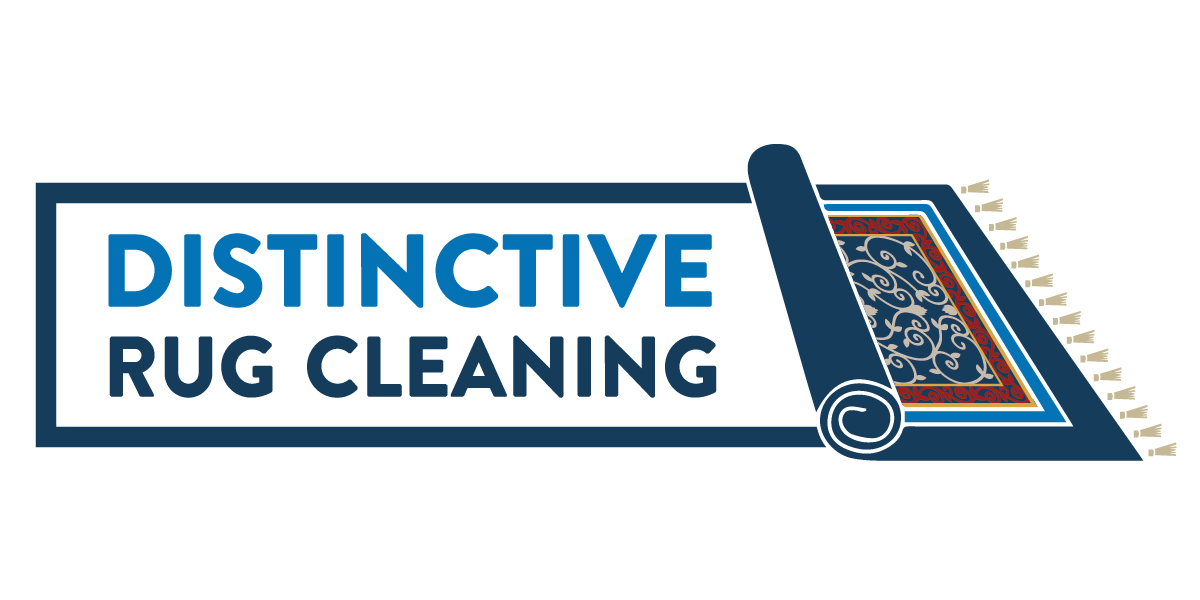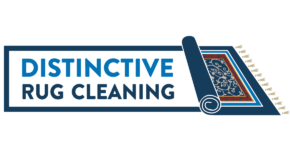Wall-to-wall carpet in a home is surface cleaned with hot water extraction or steam cleaning. Can loose area rugs be cleaned the same way or should they be washed with the full immersion method?
It depends… Variables include the rugs fiber, construction, value, and your expectations.
Rug Fiber – Identifying the rug fiber affects what solutions are safe to use and how it should be cleaned.
- Some rugs are made from the same synthetic fibers that wall to wall carpet is made of, such as nylon, polyester or olefin. These rugs could be cleaned using the same method as wall-to-wall carpet, namely hot water extraction or steam cleaning.
- Viscose/rayon/art silk are cellulose fibers. When wet this fiber is very weak. It takes a long time to dry and it commonly looks good when wet but turns brown while drying.
- Some natural fibers can loose color or become bleached out if the wrong solutions are used.
- Carpet cleaning tools may leave streaks, lines, or tool marks on natural fibers. Additionally, if the entire rug is not cleaned in the same direction going with the nap, shade or nap differences can result that cannot be fixed with a grooming rake like they can on synthetic wall-to-wall carpet.
- Carpet cleaning solutions are not formulated for use with natural fibers. Because of their high pH or being buffered, they can damage natural fibers and leave a soapy, sticky residue behind, which can cause browning or weaken the dye stability, causing dye bleeding.
- If the rug is overwetted or not dried fast, bright colored dyes can bleed into adjacent light colors or fringe.
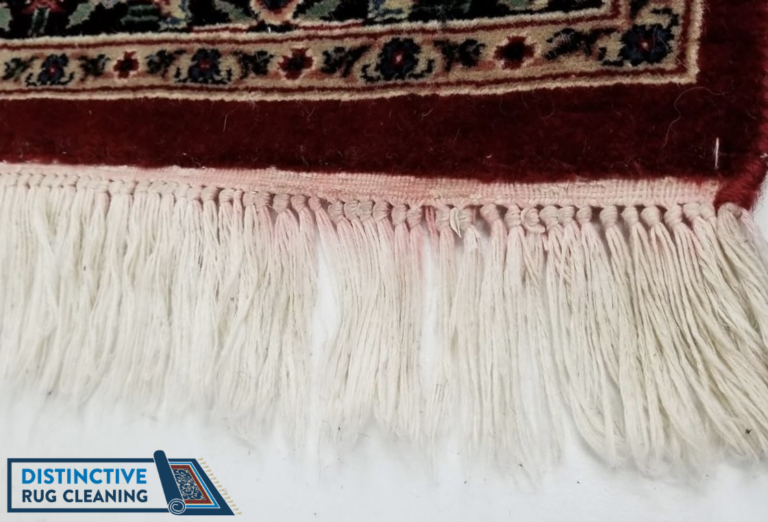
A handmade rug with dye bleeding into cotton fringe
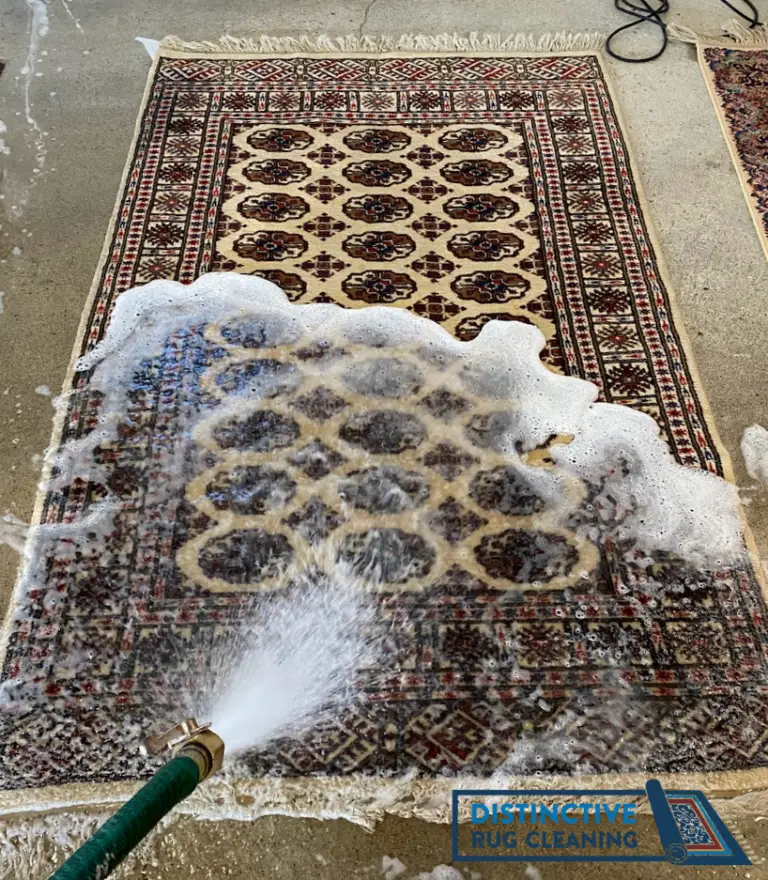
Excess soap residue in rug that was previously surface cleaned
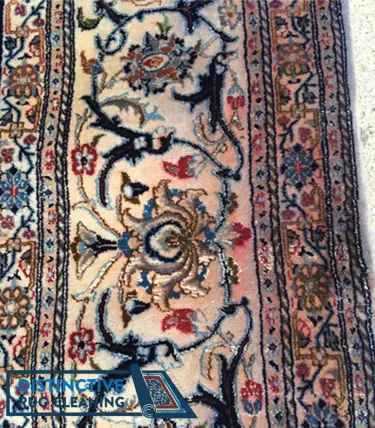
Dye bleed on wool rug
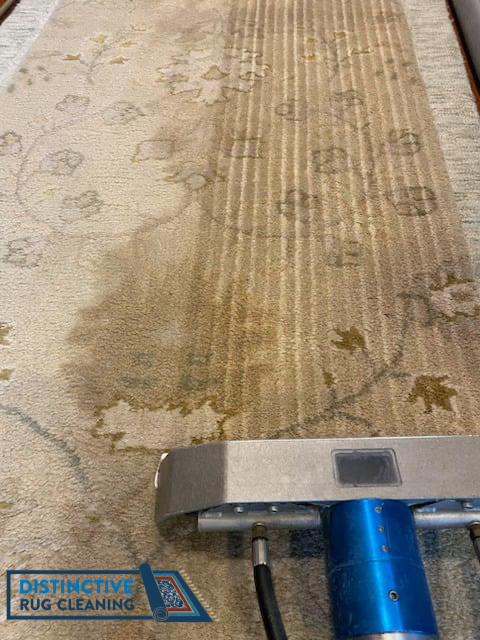
Carpet cleaning tool leaves streaks on natural fiber hand-made rug
Rug Construction – Some rugs are simply carpet remnants with a bound edge or are tufted (backing is glued on) and could be surfaced cleaned. Learn the difference between different rug construction here.
- However, some rugs with synthetic fibers have jute in the foundation. Jute is a natural fiber and can shrink. If the rug is unevenly wet, it can cause the rug to ripple. Instead of laying flat on the floor, the rug will be wavy.
- Rugs with boarders sewn together can also cause rippling because the backing moves in different directions with moisture.
- If the rug is a very thick, long shag, surface cleaning may be inadequate or result in overwetting the rug which can cause odor and/or browning.
- If the rug is loomed and not woven or tufted, it can be stretched out of square because of surface cleaning.
- Some rugs woven in certain areas are known to shrink or buckle when cleaned.
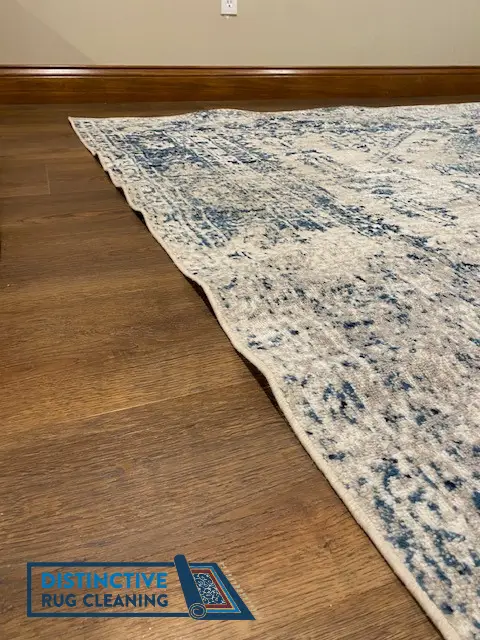
Rug ripples after surface cleaning and won’t lay flat
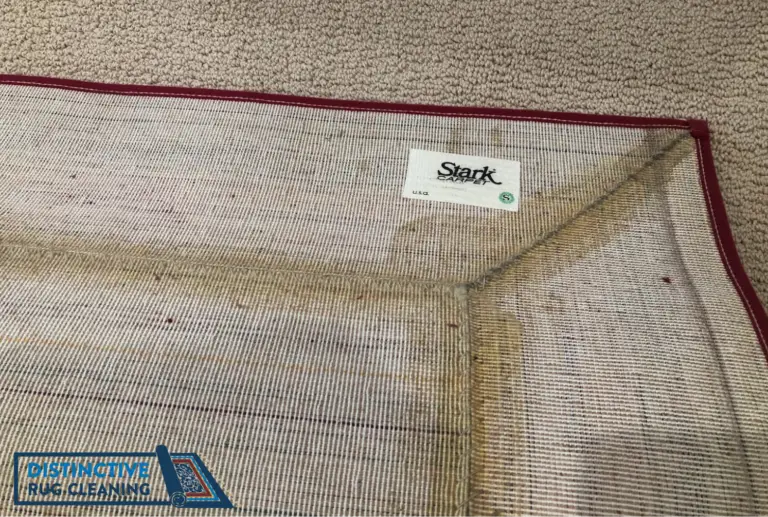
Stark Carpet with borders sewn together can ripple
Value – Today’s commodity rugs are available at most box stores and online.
- It may cost less to replace a lower quality commodity rug than do a proper full immersion washing. So finanically, surface cleaning might make more sense if it costs less for cleaning rugs that are inexpensive to purchase.
- These inexpensive rugs may also start to physically wear on the edges or get matted down because of being made with low quality materials. You may consider the long term cost savings of spending more money initially to buy a quality woven wool rug that will look great for years and will keep cheaper rugs out of landfills. Learn more in our Consumers Guide to Buying Rugs.
Will surface cleaning meet your expectations?
- How old and how dirty is your rug? If you regularly clean it for maintenance, surface cleaning may be adequate. But if your rug is soiled or it has been years since it was last cleaned, full immersion washing will give the best results.
- After surface cleaning a rug, the foundation could still be loaded with soil that is only removed with a thorough dusting. Cleaning heavily soiled knots and tassels of fringe isn’t possible with surface cleaning. The fringe could even look clean but then brown after drying because of the soil left in the rugs foundation or because the cleaning solutions aren’t thoroughly rinsed out and neutralized.
- Stain removal on natural fibers may take several applications to be successful without causing damage. Cleaning rugs at our facility gives us more control and time to ensure your rugs look as great as possible.
- If the rug has been affected by pet urine, cleaning the surface will not totally remove it, especially if it is a dense woven rug. The same strong oxidizing deodorizers that work great on synthetic wall-to-wall carpet can damage or bleach a natural fiber rug. If the rug is woven, after a deodorizing bath and full immersion wash, Distinctive guarantees odor removal.
- When having the rug surface cleaned in your home, there is an additional risk of damaging the floor underneath. If cleaning a rug over a wood floor, cleaning overspray or overwetting a rug could damage the wood floor or the finish. Extra care must be used so the cleaning tools don’t scratch the wood or vinyl floor.
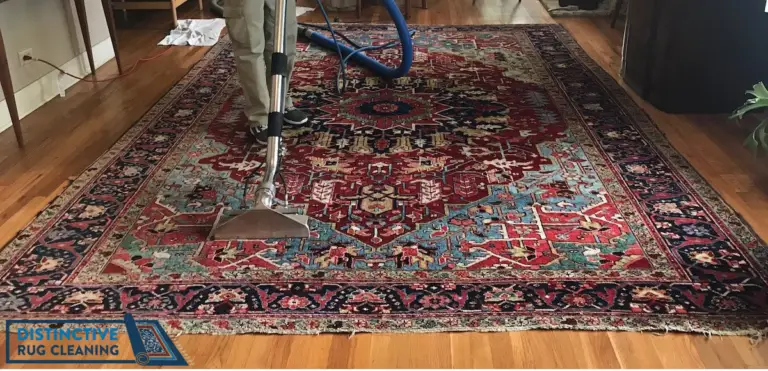
A rug being surface steam cleaned over hardwood floors
- Clients have shared that they had their rug cleaned, only to be disappointed when it was returned with the same stains or soiled areas. While surface cleaning may cost less, if it doesn’t get the rug clean and remove stains and odors, it was really a waste of money. Full immersion washing will cost more, but your rug will be cleaner and you will be happier!
- The IICRC S100 Standard for Professional Cleaning of Textile Floor Coverings states, “It is recommended that rug cleaning be performed in a specialized facility, rather than on-location, since in-plant cleaning is able to provide a more thorough cleaning and provides greater control over cleaning variables. Occasionally, circumstances can dictate cleaning a rug on-location, but it is recommended that this be the exception, rather than the rule.”
